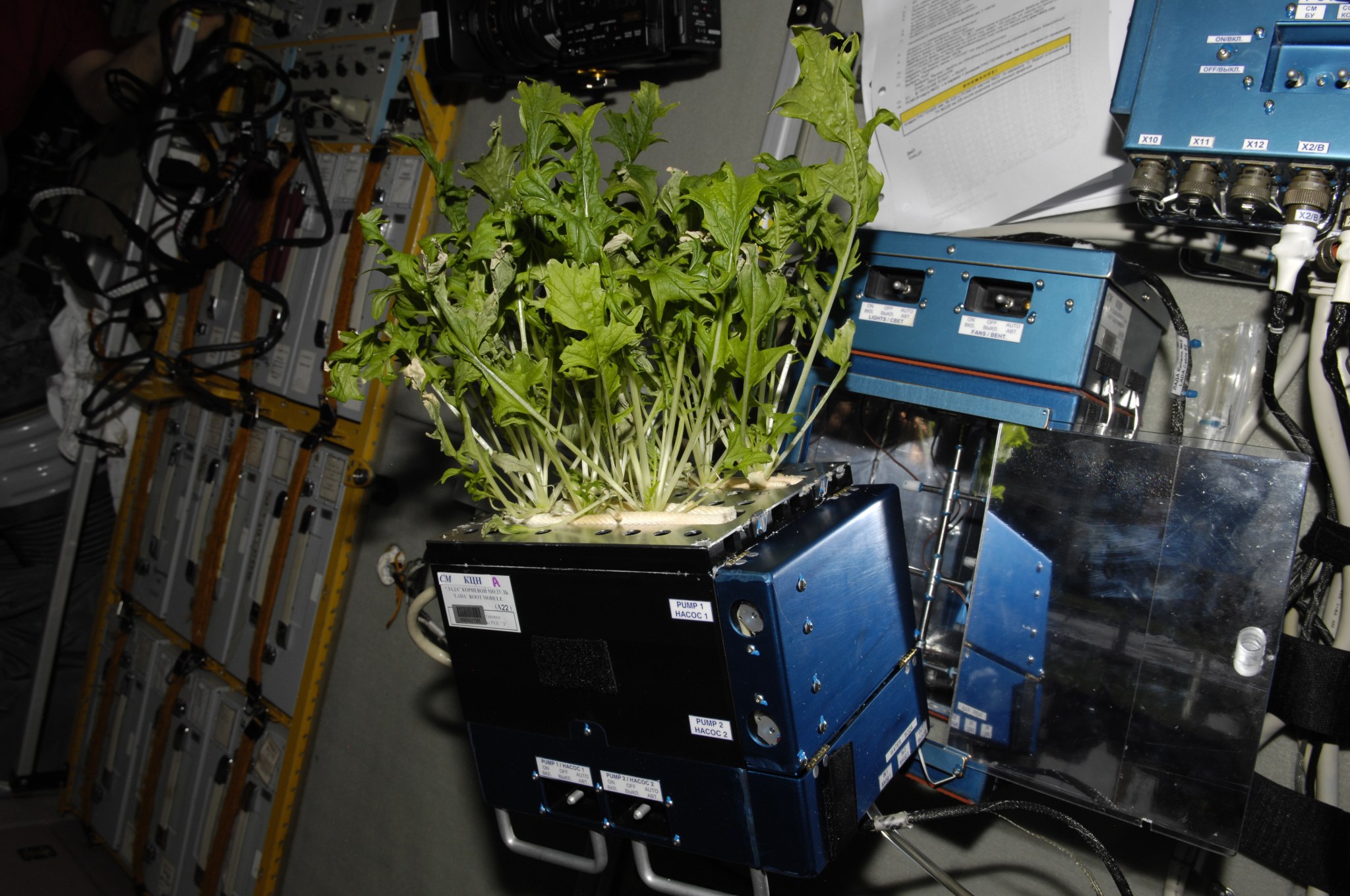Growing crops is a significant part of NASA’s strategy for feeding astronauts on the journey to Mars and beyond, but there are many challenges beyond planting a seed and getting it to bloom.
Among other issues, plants release an odorless, colorless gas called ethylene as they grow. That’s no big deal in a garden or farm on Earth, but in a closed environment like a spacecraft, the gas can build up.
And what does ethylene do? Unfortunately, it accelerates decay, which means that fantastic crop the astronauts hope to harvest won’t last very long.
To address the problem, Marshall Space Flight Center partnered with a group at the University of Wisconsin, Madison, to build an ethylene “scrubber” into plant growth chambers. As the plant grows, air is drawn into tubes coated with thin layers of titanium-dioxide (TiO2). When an ultraviolet light source located in the tubes strikes the TiO2, the ethylene gets converted to water and carbon-dioxide, both of which are beneficial for plants.
First used in 1995, where it successfully preserved a crop of potato seedlings aboard a space shuttle, the ethylene scrubber has since been updated and flown on several missions to the International Space Station.
But the scrubbers turned out do far more than the original goal of eliminating ethylene. They were also able to scrub all kinds of unwanted organic particles from the air, from bacteria and viruses to mold, fungi and even bad odors.
Recognizing the market potential of such a technology, a Georgia-based company, KES Science & Technology, licensed the patent from the University of Wisconsin and later partnered with another company based in Florida, Akida Holdings, to commercialize it.
An update to the technology a few years ago resulted in a home unit, dubbed Airocide, that quickly found at least one high-profile fan: Ellen Degeneres, who featured the product on her show in 2013. “Who wouldn’t want better air? There are no filters to clean, no particle is too small,” she said in the segment.
Airocide works differently from more commonly known HEPA (High-Efficiency Particulate Air) filters, which are designed to capture particles that are 0.3 microns across and larger. Smaller particles — like viruses, bacteria and volatile organic compounds — just slip right through the filter, explains Barney Freedman, vice president at Akida Holdings. Not so with Airocide. “We’re able to eliminate those particles on contact,” he says.
In addition to the consumer model for home use, the company sells its product to industry, everywhere from grocery stores to distilleries and florists. The device also keeps food fresh longer in refrigerators — both standard residential models and commercial versions used to distribute food aid to remote towns.
In hospitals and clinics, Airocide’s powerful germ-killing properties purge the air of harmful bacteria like methicillin-resistant Staphylococcus aureus (MRSA) and vancomycin-resistant Enterococcus.
“We know technology-wise that this device works,” Freedman says. “It was developed by NASA, it’s FDA-approved, and it’s been tested and vouched for by a host of universities. We’re very confident in what it can do.”
NASA has a long history of transferring technology to the private sector. Each year, the agency’s Spinoff publication profiles about 50 NASA technologies that have transformed into commercial products and services, demonstrating the wider benefits of America’s investment in its space program. Spinoff is a publication of the Technology Transfer Program in NASA’s Space Technology Mission Directorate.
To learn more about this NASA spinoff, read the original article from Spinoff 2013.
For more information on how NASA is bringing its technology down to Earth, visit: http://technology.nasa.gov
Samson Reiny
Goddard Space Flight Center




























